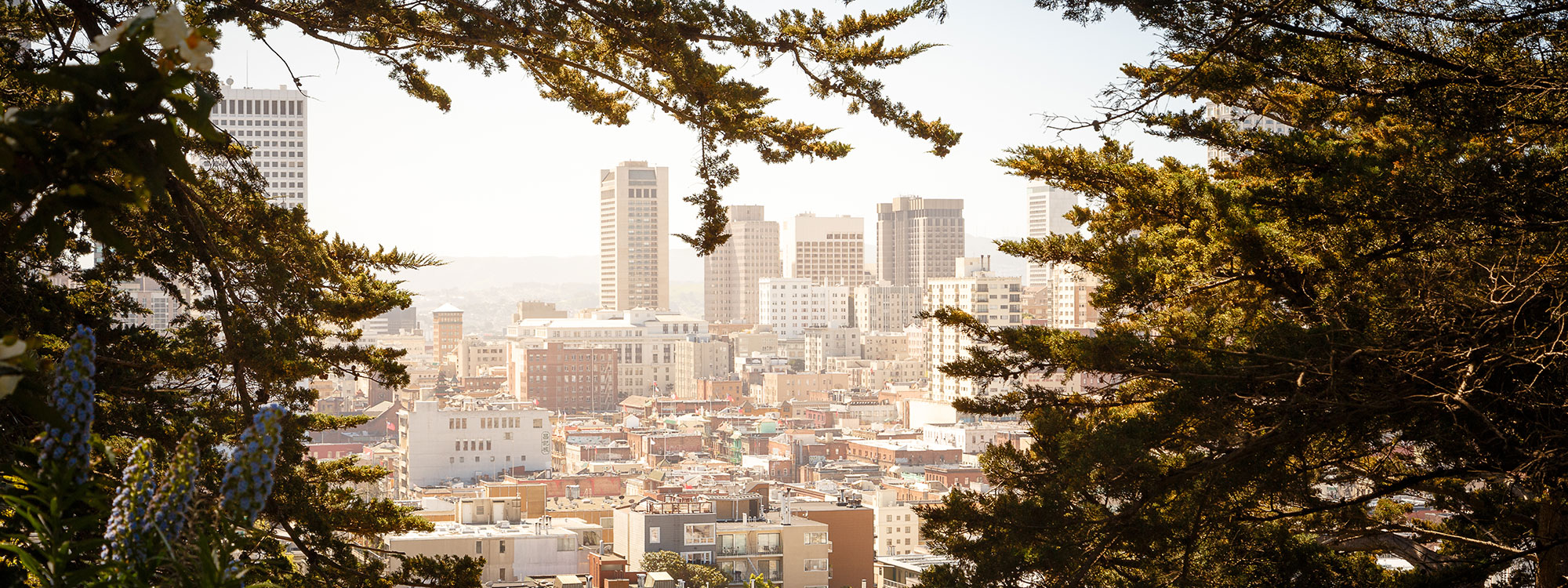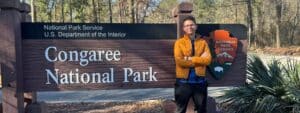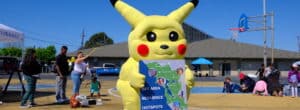Across our region, we are already seeing the effects of climate change, and these effects like wildfires, flooding, and extreme heat are projected to become more pronounced in the coming decades. The reality is that poorly planned growth throughout the region has not only contributed to the housing affordability crisis we now find ourselves in but it’s also increased traffic, which in turn has increased greenhouse gas emissions—a driving factor of climate change. Poor growth decisions have also meant the loss of economically valuable farms and ranches and our beautiful natural open spaces that do so much for our health and wellbeing. All of this is to say that we’re long overdue to start using land in better ways.
Fortunately, smart growth policies contribute to both mitigating and adapting to climate change. If we change how the Bay Area grows, we can make our region more climate-resilient, affordable, inclusive, and economically competitive, while also protecting our farms, forests, and watersheds.
So what is smart growth? Smart growth is planned economic and community development that attempts to curb sprawl development and worsening environmental conditions. It aims to better serve the economic, environmental, and social needs of communities.
Mitigation strategies reduce greenhouse gas emissions from development, and adaptation strategies make communities more resilient to the effects of a changing climate. Smart growth strategies also bring environmental benefits and provide economic advantages to local governments and the private sector. In addition, they can save people money on energy and transportation—particularly important for low-income residents—and they help protect human health.
Connection Between Smart Growth and Climate Change
The following principles have been adapted from the US EPA.
Mitigation
The way we develop our communities has significant impacts on greenhouse gas emissions. Communities can reduce greenhouse gas emissions from development and redevelopment if they:
- Build compactly and use energy-efficient, green building techniques, which reduce emissions from both electricity generation and transportation.
- Growing Cooler (PDF), EXIT a 2008 study published by the Urban Land Institute and partially funded by the EPA, concluded that compact development can reduce vehicle miles traveled by 20 to 40% compared to conventional development. Based on the amount of development that will take place and the percentage of that development that could reasonably be expected to be compact infill, the study estimated that compact development could reduce carbon dioxide (CO2) emissions by 7% to 10% in 2050.
- A subsequent study, Moving Cooler, EXIT found that a combination of more compact development and investments in transit and other transportation options could reduce greenhouse gas emissions from transportation by 9% to 15% by 2050.
- Reuse existing infrastructure and buildings to take advantage of previous investments and the energy already used to build them.
- Put homes, jobs, stores, parks, schools, and other destinations close to each other so that people can easily walk, bike, use public transit, or drive shorter distances.
- Preserve green space, which can sequester CO2, by conserving ecologically valuable land and promoting development in previously developed areas—reducing the pressure to build on undeveloped land.
Adaptation
Smart growth strategies could help communities adapt to these changes, as well as natural disasters, economic changes like volatile energy prices, and other challenges that arise regardless of climate change. Some strategies communities could consider include:
- Determine which areas are both well-connected to existing development and less vulnerable to current and projected climate change impacts such as wildfires, sea level rise and higher storm surges, and riverine flooding, and encourage growth in these areas.
- Discourage building in areas that are currently or are projected to be more vulnerable to climate change-related impacts. Making it easier to build in safer areas can help relieve pressure to develop in more vulnerable places.
- Preserve large, contiguous areas of open space to better protect ecosystems that might be under pressure from climate change. Open spaces preserved along bodies of water can also absorb floodwaters and reduce flooding in developed areas.
- Coordinate land-use and transportation infrastructure decisions, and incorporate climate change projections into these decisions.
- Encourage water- and energy-efficient buildings and land-use patterns so that communities can continue to thrive if energy prices rise. This strategy can also help communities and their residents better cope with drought and extreme heat.
- Upgrade stormwater systems to better manage heavier storm flows and consider using green infrastructure to reduce the amount of runoff from paved surfaces.
- Encourage green roofs, parks, street trees, and other elements that can reduce ambient air temperatures and filter pollutants from stormwater runoff and the air. Adding greenery along streets makes walking and biking more comfortable and appealing.
- Design buildings with adaptation and resilience in mind. For example:
- Modular buildings can more easily be moved, renovated, and deconstructed as a community or tenant’s needs change and as climate-related impacts change. Strategies include using exposed mechanical fasteners, disentangling utilities from the structure, using moveable walls and ramps, using standard-sized modular building components and assemblies, and providing easy-to-understand information on construction drawings and documents.
- Buildings designed for passive survivability—meaning they remain habitable if they lose external power for an extended period—can help ensure that even if the power goes out, the building will stay at a safe temperature. Because passive survivability techniques such as better insulation and operable windows often save energy as well, they can also save occupants money on energy bills.
Why Smart Growth?
When communities choose smart growth strategies, they can create new neighborhoods and maintain existing ones that are attractive, convenient, sustainable, safe, and healthy. Smart growth neighborhoods preserve the best of their past while creating a well-designed future for generations to come.
Bay Area cities and towns have room for enough new homes and jobs for everyone. We can focus all of the region’s needed new development in existing urban areas, especially in central downtown locations and around transportation hubs. We can use land now wasted on vacant lots, parking lots, and other under-used urban properties to build homes for people across the income spectrum. In other words, we can build affordable, inclusive homes near jobs, services, and transit, without the need to sprawl onto our natural and agricultural lands. As a result, our region will grow sustainably, a crucial step as we learn to adapt to a changing climate.
Smart Growth Examples
This rendering of San Pablo Avenue in Oakland shows how transforming vacant lots and underused spaces into homes, shops, and jobs close to transportation can provide quality homes for people of all income levels. Slide left and right to see the transformation.
[twenty20 img1=”18440″ img2=”18441″ offset=”0.5″]
And watch as this San Leandro, CA street transforms into a welcoming, walkable neighborhood with homes and shops using the principles of smart growth.
GIF by Urban Advantage
Smart Growth Resources
- Download the San Jose Urban Village Toolkit for a guide on how to engage in your local neighborhood plan.
- Learn more about Plan Bay Area, our region’s blueprint for growth.
- Read about why climate-smart growth is critical for a healthy region and climate in the San Francisco Chronicle.
- Learn more about how urban growth boundaries promote smart growth.
- Learn more about sprawl development.
Get Updates
Sign up for monthly updates on Smart Growth and Conservation in the Bay Area here.





